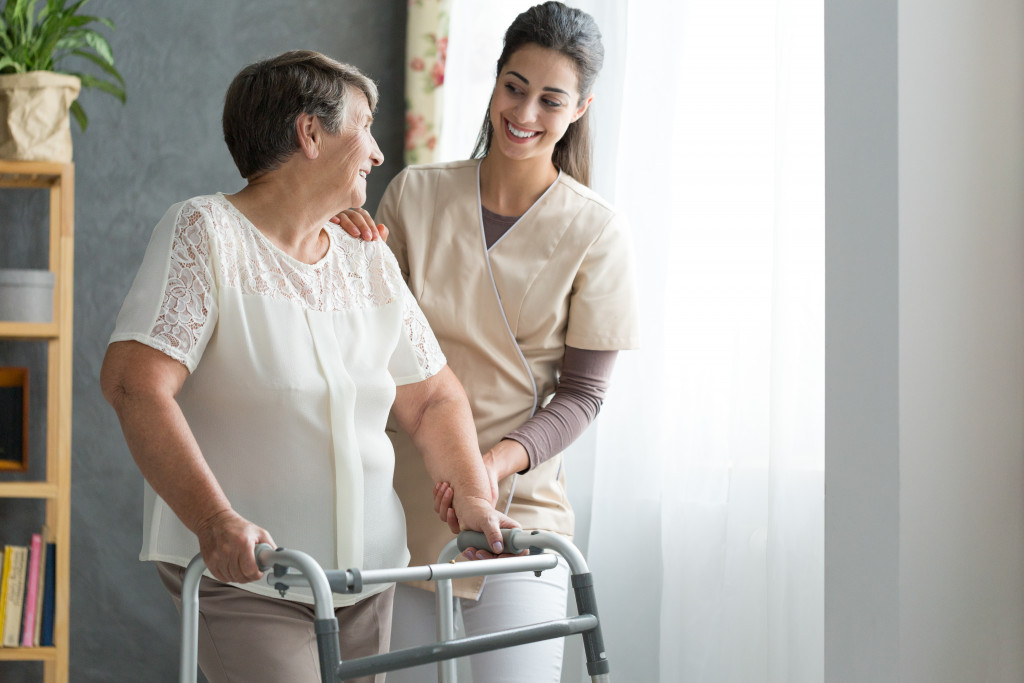- Maintain a nutrient-dense diet rich in bone-healthy nutrients like calcium and vitamin D, and limit intake of alcohol and caffeine.
- Engage in regular weight-bearing exercises such as walking, jogging, dancing, and high-impact aerobics to maintain bone density and strength.
- Kick unhealthy habits like smoking and excessive alcohol consumption, as they harm bone health.
- Prioritize fall prevention by keeping your living space safe and engaging in balance-enhancing activities.
- Regularly utilize a DEXA scan for early detection of osteoporosis, especially if you’re at a higher risk.
Welcome to this comprehensive guide on safeguarding yourself against osteoporosis and detecting it at an early stage. Osteoporosis is a condition that weakens bones, making them fragile and susceptible to fractures. It often develops gradually, with no symptoms, until a fracture occurs. However, with the right knowledge and proactive measures, you can significantly reduce your risk of osteoporosis and identify it early. This guide will present five crucial tips to help you protect your bone health and live a more active and fulfilling life.
1. Maintain a Bone-Healthy Diet
Proper nutrition plays a vital role in maintaining strong bones. Ensure your diet is rich in calcium, a crucial mineral for bone health. Incorporate dairy products, leafy greens, almonds, and calcium-fortified foods into your meals. Additionally, vitamin D is essential for calcium absorption, so get sufficient sunlight exposure or take vitamin D supplements.
Consume foods rich in other bone-supportive nutrients like magnesium, phosphorus, and vitamin K. Leafy greens, nuts, whole grains, and fish are excellent sources of these nutrients. Avoid excessive alcohol and limit caffeine intake, which can hinder calcium absorption. A well-balanced and nutrient-dense diet will go a long way in maintaining strong and healthy bones.
2. Engage in Regular Weight-Bearing Exercise
Physical activity, especially weight-bearing exercises, helps maintain bone density and strength. Always consult a healthcare professional before starting any new exercise regimen, especially if you have any existing health conditions.
Here are the types of weight-bearing exercises you can do regularly:
Walking
This is the easiest exercise to incorporate into your daily routine. Walking, a low-impact activity, is perfect for beginners or individuals recovering from an injury. It allows you to gradually increase your fitness level, improve cardiovascular health, and strengthen muscles without putting excessive strain on your joints. Plus, you can enjoy the benefits of outdoors and exploring your surroundings while engaging in this gentle exercise.
Jogging or Running

These high-impact exercises, such as running and jumping, enhance bone health. By subjecting your bones to the stress and strain of these activities, you stimulate them to become stronger and denser. However, it’s important to note that these exercises are more suitable for individuals in good health and with no existing bone-related issues. Always consult with a healthcare professional before starting any new exercise regimen.
Dancing
Dance workouts are entertaining and highly effective in improving various aspects of fitness. These workouts can enhance balance, coordination, and muscle strength through rhythmic movements and choreography and even promote bone health. Dance workouts allow individuals to express themselves artistically while reaping the many physical benefits they offer.
Aerobics
Engaging in high-impact aerobic activities can be highly advantageous for maintaining bone density. When selecting your routines, consider incorporating jumping or skipping exercises, as these movements exert a greater force on the bones, stimulating bone growth and strengthening. Incorporating such activities into your fitness regimen can maximize the benefits and contribute to your bones’ long-term health and resilience.
3. Kick Unhealthy Habits to the Curb
Smoking and excessive alcohol consumption are detrimental to bone health. Smoking affects bone density and weakens bones, while heavy alcohol intake interferes with bone formation and calcium absorption. Quitting smoking and moderating alcohol consumption will not only benefit your bones but also have positive effects on your overall health.
4. Prioritize Fall Prevention

Falls are a significant risk factor for fractures, particularly in individuals with osteoporosis. Take measures to prevent falls by keeping your living space well-lit and clutter-free. Install handrails and grab bars in critical areas such as bathrooms and stairways. Engage in activities that improve balance, such as yoga or tai chi. If you have any vision or balance issues, discuss them with your healthcare provider for appropriate evaluation and intervention.
5. Utilize a DEXA Scan for Early Detection
A DEXA (dual-energy X-ray absorptiometry) scan is a specialized X-ray that measures bone mineral density. It is the most accurate method for diagnosing osteoporosis and assessing fracture risk. Consider getting a DEXA scan if you are at higher risk for osteoporosis, such as postmenopausal women and older adults. Early detection allows for timely intervention and appropriate management strategies to prevent further bone loss and reduce the risk of fractures.
In Closing
Protecting your bone health and detecting osteoporosis early are essential for maintaining an active and independent lifestyle. These five tips can significantly reduce your risk of osteoporosis and its associated complications. Remember to maintain a bone-healthy diet, engage in regular weight-bearing exercise, avoid unhealthy habits, prioritize fall prevention, and consider utilizing a DEXA scan for early detection. Empower yourself with knowledge and take charge of your bone health for a brighter and healthier future. Always consult with your healthcare provider to tailor these strategies to your needs and make informed decisions about your bone health.







